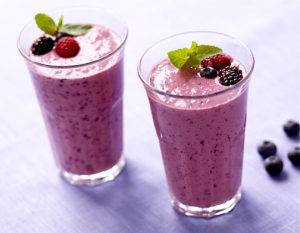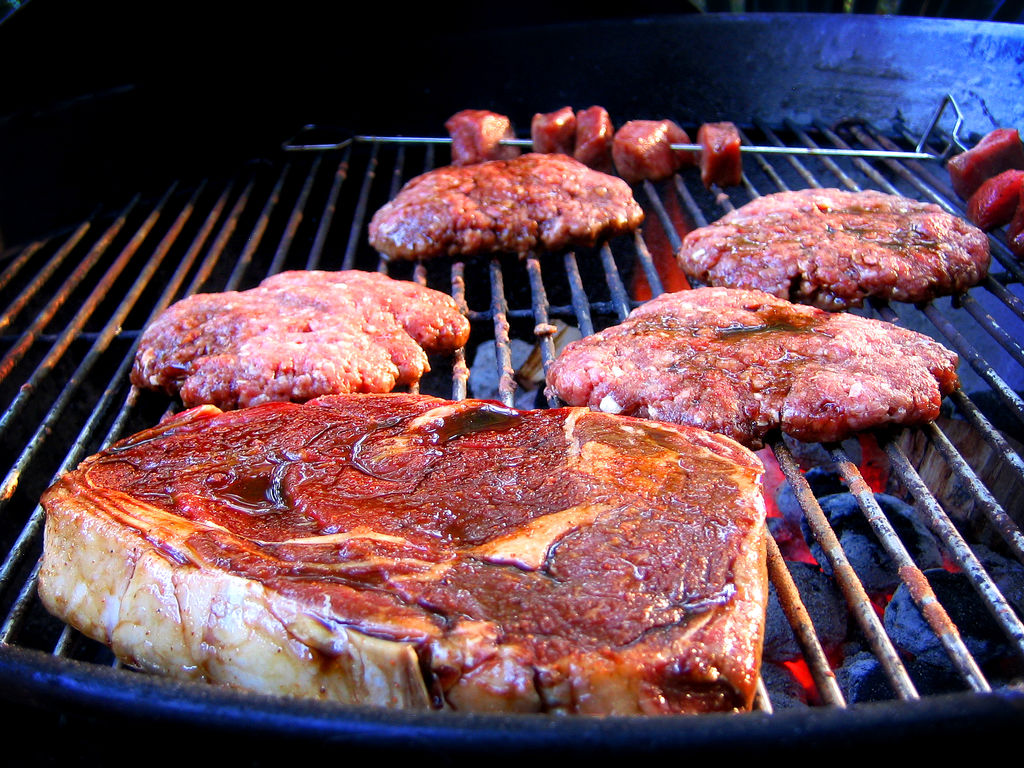Nutrition for Hardgainers: Escape from Hardgainer Hell
December 16, 2014
Nutrition for hardgainers is an overwhelming topic for many guys.
For some, building muscle is as easy as taking a protein shake and 5g of creatine monohydrate after a workout.
I, for one, am not that guy.
In fact, for years I could pull off skinny jeans and small t-shirts no matter how much I thought I ate or how hard I trained.
It sucked.
That all changed one hot, muggy afternoon.
I just got done peeling myself off the turf at Football practice after I was absolutely trucked by a teammate. My teammate wasn’t a prick; I just provided less resistance than a blade of grass.
It was embarrassing, humiliating, and a huge wake-up call to change. I read everything on nutrition and training I could, trying to implement it all at once.
Still, I failed miserably. My desire to change was so great that I changed everything whenever I read a fancy supplement label with giant promises or a new training routine.
Nutrition For Hardgainer: Information overload is a surefire way to fail.
Much like a Hail Mary pass your efforts will probably end up with a turnover and failure. It’s much better to dink and dunk your way down the field, taking what you can and creating small wins on a daily basis until you spark a big play.
Much like training, you wouldn’t jump into heavy singles without first building up and practicing technique with heavy loads.
Nutrition for hardgainers is no different in that you need to gradually ramp up to not overwhelm your body.
It’s time to stop being the object of ridicule despite busting your ass. By implementing these hard gainer nutrition laws one at a time you’ll see the light and earn your pass out of hard gainer hell.
1)Drink Liquid Meals Before, During, and/or After your Training
Ironically, when I’m working with clients looking to lose weight one of the first things we look to clean up is the intake of liquid calories. As it stands, my number one strategy to gain the first few pounds of hard-gainer muscle is to incorporate liquid calories before, during, and/or after training. The benefits are huge. Since you’re already guzzling fluids to rehydrate during workouts it’s easy to sneak in 500+ calories for improved exercise recovery, protein synthesis, and tissue repair.
What you need:
-Blender because well, you need to blend the damn thing
–Fruit for flavor, high-quality nutrients, and carbohydrates for energy
-Spinach or Greens, you won’t even taste it and the added veggies are vital to balance a high-protein diet
– Protein to support muscle growth and tissue repair
–Topper/Texture adder for additional nutrients and to bring the whole recipe together
– Optional: Creatine monohydrate to support high-performance training, or a greens supplement to fill nutritional gaps.
Raspberry Chocolate Gains:
This shake is an awesome post-workout shake, quick breakfast, or a healthy sweet treat option. If you are looking for fat loss keep this decadent treat for a post-workout treat due to the carbohydrate count.
Ingredients
-1 Cup Raspberries (frozen)
-2 Scoops Chocolate Whey Protein
-1.5 Cups Raw Spinach
-1 Cup Coconut Milk
– ½ cup water, ½ cup ice
Bottom Line: In all seriousness supplements make things much easier. If you’re busy then $2 for two scoops of protein per day is a no-brainer compared to cooking up an extra ½ pound of chicken for a similar protein equivalent. Both from a financial and time perspective protein supplements like Biotrust or Onnit are a godsend. Make a batch of Supershakes like the shake listed above.
2) Track Your Calories for Self-Awareness
Tracking calories is a pain in the ass.
Tracking Calories is an inexact science at best.
Still, if you’re not gaining weight the reason is simple—you’re not getting enough calories. Simple and straightforward, multiply your body weight by 18 to find the minimum number of calories you need.
Therefore, if you weigh 160 pounds… 160×18= 2880 calories
Thermogenics are simple–if you’re in a caloric surplus you will begin adding weight to your hard gainer frame. When it comes to “energy out,” the body’s energy needs include the amount of energy required for maintenance at rest, physical activity and movement, plus food digestion, absorption, and transport. “Energy in” is simpler: how many calories you’re putting into your body. Altogether, you need to put in 300-500 more calories than you’re burning for a positive energy balance.
How to Create a Positive Energy Balance:
- Build muscle with weight training per these recommendations I wrote about on T-Nation
- Create muscle damage with intense weight training
- Try consuming more shakes and liquids with calories
- Build-in energy-dense foods that don’t cause rapid satiety (nut butters, nuts, trail mix, oils, etc.)
- Eat more frequently
- Take advantage of workout nutrition with additional shakes before, during, and after exercise.
Seriously—EAT MORE
If you’re not gaining weight the hard truth is you need to eat more. All the training in the world won’t do anything for you if you’re not putting enough fuel into your body. You need tons of fuel to support your hard training and even more to build muscle. You can’t build a brick wall without bricks—get your calories in.
Bottom Line: The science is in-exact, but self-awareness is priceless. The biggest most jacked guys in the world count their calories because it instills self-awareness and discipline on exactly what it takes to accomplish your goal. Count calories using Myfitnesspal for the next two weeks and monitor your weight every other day. This way you’ll see the amount of food needed to reach your goals and develop eating habits that match your goals.
3) Don’t Fast if you want to Gain Muscle
I understand the draw of intermittent fasting for fat loss, overall health, and working around a hectic schedule, but a restricted eating schedule is the last thing under-eating hard gainers need to gain muscle.
Hardgainers simply can’t eat 4 cups of rice and 16oz of steak at dinner- they think a chicken breast and one sweet potato is eating big.
While you don’t need to eat every two or three hours or drag a cooler to work you must make time to get your calories in.
If you’re dead-set on intermittent fasting for muscle gain don’t go over twelve hours without eating, you wont get enough calories in to support muscle growth.
Bottom Line: It doesn’t matter how many bricklayers you have; if there aren’t enough bricks you won’t build a foundation. The same logic applies to building muscle—all the training is for naught unless you eat enough calories to support muscle growth.
4.) Balance Acids and Bases:
Look bones: You’re crushing your diet, training hard, and making headway in your escape from hard gainer hell. Problem is, you reek like a toxic dump, your stomach is in fits, and your digestion is garbage.
What gives?
Digestive health is a huge indicator of what’s going on inside your body while you’re preoccupied with pumping your pecs and squatting a house. When muscle building is the goal, hard gainers opt for high-protein foods like tasty dead animal flesh to support their hard training.
The tradeoff is an imbalance between having too many highly acidic foods (meats) and not enough bases (leafy greens) that results in symptoms of increased inflammation, acid reflux, diarrhea, and constipation. Any way you look at it health suffers unless the body is in the balance between acidic foods and base foods.
Without a balanced approach to eating training, recovery, and overall health suffer due to an acidic environment. Basically, you should be eating a handful of veggies while you’re gnawing away at your next sirloin.
Tips to Balance Your Diet:
– Have 2 “handfuls” or two cups of veggies with each meat-based meal. Eat one before diving into your protein source to jump-start the digestive process.
– Incorporate fermented foods like raw sauerkraut to improve digestion. Not only is it great on Brats (I’m from Wisconsin, Dontcha know), raw sauerkraut and other fermented foods are rich in digestive enzymes and bacteria to improve digestion.
- Kudos on the Scrawny to Brawny program, blending spinach into protein shakes is an easy way to balance acids and bases in your diet. From here on out, blend spinach into your shakes. Trust me, you won’t even taste it.
- Take a greens to supplement like ONNIT Superfood. Not only can these replace a multi-vitamin, but they’ll also improve your digestion, immune function, and counteract a high protein diet. Plus, most of us struggle to get our veggies. Pick up ONNIT Superfood and have it you’re your creatine first thing in the morning.
Bottom line: Health is the first wealth and an unhealthy body is unlikely to be optimal for training. Without our health in line, we won’t ever build lean muscle and improve performance anyways so it is always best to focus on health first.
5.) Don’t Fear Fat
If you haven’t caught onto the theme yet calories are the supreme ruler for your hardgainer nutrition. Without enough calories, your muscle-building workouts are all for naught. One of the easiest ways to increase your calorie intake is to increase your intake of higher fat foods because fat contains 9 calories per gram of fat.
Avoid fatphobia—an increased intake of fatty foods like grass-fed meats, raw nuts, and cooking with virgin unrefined coconut oil or extra virgin olive oil has been shown to increase anabolic hormone levels like testosterone to support healthy energy, libido, and muscle building.
- For example, by using 2 tbsp. of olive oil to prepare our meals 2x per day, we can “sneak in” over 60g of fat and 540 calories into our diets.
- Further, if we eat 3 handfuls (1/4 cup) of mixed nuts per day, which may be an extra 300-400 calories, depending on the size of your hands.
- If we go with 4 whole eggs for breakfast instead of 3 egg whites and 1 whole egg, that’s an extra 18g of fat and 162 calories.
Bottom Line: Fatty foods are the most calorically dense and will drastic bump in calories for building muscle. Furthermore, fats in your diet will support anabolic hormone levels, libido, and energy for better workouts, more muscle, and 2000% more awesome manliness.
6.) Hyper Hydrate
Body water in humans varies with age and sex, but the body is composed of 40-60% water. That means for a 160lb man 80+ pounds of your water are composed of water.
80 pounds.
Needless to say, proper hydration is key for tons of bodily functions:
- Water acts as a solvent to dissolve chemicals
- Water transports nutrients to and from cells
- Waste management
- Water plays a role in the synthesis of proteins, glycogen, and other molecules
- Water acts as a catalyst for metabolic reactions in the body
- Water lubricates joints and tissues
- Water helps regulate temperature
Our demands for water obviously increase with hard training. The enhanced metabolic rate of muscle contraction requires a larger delivery of nutrients and oxygen along with faster waste and heat removal from the body to continue training. Even the most experienced athletes struggle with water intake despite the fact that 1-2 % reduction in body weight from water loss leads to drops in performance through muscle cramping, decreased endurance, loss of motor skill, and a loss of muscular strength.
Bottom Line: As much as 60% of your body and 75% of muscle tissue is water. If you’re dehydrated you’re not performing up to your maximum potential and limiting growth. After training, muscle repair requires fluid for nutrient absorption to maximize recovery.
Implementing the Goodies
All the information is the world is great, but it takes a thorough plan to implement change.
All the information is the world is great, but it takes a thorough plan to implement change. (yes, it bears repeating)
Start for the first two weeks by adding a super shake like the recipe listed above after every workout and off day for breakfast.
Next, start tracking your calories for the following two weeks.
By one month from now, you’ll be consuming an extra 500 calories/day in shakes with a huge bump in awareness of what’s going into your body.
At the end of one month, that’s at least a bump in 15,000 total calories, or an extra 7.5 days worth of food to help you build muscle. Slowly add fats, additional water, and keep your health a priority while you bulk.
Nutrition for Hardgainers: COMMIT AND PERSEVERE
Ending your hard gainer hardships isn’t about the perfect plan; rather, it’s about consistent behaviors that manifest into long-term change. If you’re a scrawny dude who sticks to a routine and diet for three days and then flips out when his abs lose a vein, only to switch to a fat loss diet this is for you.
The road is tough, but you must stay the course and persevere through the tough times. Muscle growth and getting jacked only take place in the presence of excess calories and amino acids for muscle fiber repair. If you’re gaining too much body fat look back at your food log and clean things up—health is still important.
Keep your goal, persevere, and crush your nutrition. If your goal truly matters I’m challenging you to step to the plate and see things through.
You’ve got this—now win the day.
P.S.
[Stuck as a Hardgainer? I’ve been there and I’m here to help. Head here for your personalized hardgainer muscle building program: Coaching]
photo credit: cranrob via photopin cc
photo credit: ratterrell via photopin cc










[…] Escape from Hardgainer Hell: Nutrition for Hardgainers — Eric Bach […]
[…] Escape From Hardgainer Hell: Nutrition for Hardgainers – Eric Bach […]
[…] Related: Nutrition for Hardgainers […]
All my life I’ve been skinny and as much as I worked out I got nowhere because my damn metabolism was so fast.
Time and time again I couldn’t find a method until a friend recommended me this… https://bit.ly/2xOL7uy
It’s definetly worth a try, I’ve recommended it to anyone who’s had a hard time gaining muscle mass.
All the info you are giving is great , but my problem is I have about 20 to 25 lbs I need to loose and about 18 lbs is in the stomach or mid drift area .What should I do? I work out 3 to 4 days a week and can’t seem to get rid of this mid drift weight
Hey Russell,
Great start on the training. The key factor is going to be your diet.
Are you tracking your calories? Are you consciously eating at a deficit? Without a caloric deficit, you won’t lose fat no matter how hard you train.